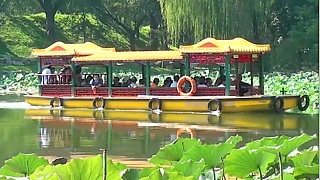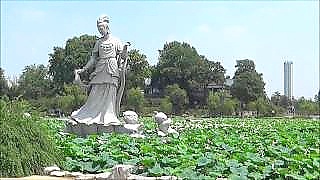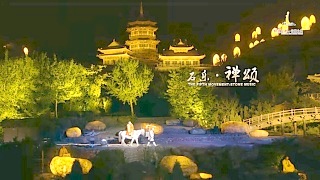
|
Day Trips from ShangHai, China
Suzhou 苏州 (Sūzhōu): Explore the "Venice of the East" known for its classical gardens, ancient canals, and traditional architecture. Visit the Humble Administrator's Garden, stroll along Pingjiang Road, and take a boat ride on the Grand Canal.
Hangzhou 杭州 (Hángzhōu): Discover the scenic beauty of West Lake, a UNESCO World Heritage Site surrounded by lush hills and ancient temples. Visit the Lingyin Temple, explore the Six Harmonies Pagoda, and enjoy a leisurely boat cruise on the lake.
Nanjing 南京 (Nánjīng): Explore the historic capital of China known for its ancient city walls, imperial palaces, and vibrant cultural scene. Visit the Sun Yat-sen Mausoleum, walk along the Qinhuai River, and climb to the top of the Nanjing City Wall for panoramic views.
Wuzhen 乌镇 (Wūzhèn): Step back in time in this ancient water town known for its well-preserved architecture, stone bridges, and tranquil canals. Explore the East and West Scenic Areas, visit the Folk Custom Museum, and take a boat ride along the waterways.
Shaoxing 绍兴 (Shàoxīng): Experience the cultural heritage of this historic city famous for its ancient canals, traditional wooden houses, and rice wine. Visit the Lu Xun Former Residence, explore the Keyan Scenic Area, and sample local specialties such as stinky tofu and fermented rice wine.
Huangshan 黄山 (Huángshān): Embark on an unforgettable journey to the Yellow Mountain, known for its dramatic peaks, deep valleys, and mystical beauty. Hike along scenic trails, watch the sunrise from the summit, and marvel at the sea of clouds.
Shaoxing 绍兴 (Shàoxīng): Explore the ancient water town of Wuzhen, known for its well-preserved Ming and Qing dynasty architecture, stone bridges, and tranquil canals. Stroll along the cobblestone streets, visit historic residences and workshops, and enjoy a boat ride along the waterways.
Nanjing 南京 (Nánjīng): Discover the rich history and cultural heritage of Nanjing, the ancient capital of China. Visit the Nanjing City Wall, explore the Confucius Temple area, and stroll along the banks of the Qinhuai River.
Hangzhou 杭州 (Hángzhōu): Relax in the scenic beauty of West Lake, a UNESCO World Heritage Site known for its serene landscapes and historic sites. Take a leisurely boat cruise, visit Lingyin Temple, and explore the picturesque pagodas and gardens.
Suzhou 苏州 (Sūzhōu): Explore the classical gardens and ancient water towns of Suzhou, known for their tranquil beauty and rich cultural heritage. Visit the Master of the Nets Garden, take a boat ride along the Grand Canal, and stroll through the historic streets of Pingjiang Road.
Zhouzhuang 周庄 (Zhōuzhuāng): Experience the charm of Zhouzhuang, one of China's most famous water towns, with its picturesque canals, historic bridges, and traditional architecture. Visit the Twin Bridges, explore the Shen's Residence, and take a boat ride through the scenic waterways.
Wuxi 无锡 (Wúxī): Discover the beauty of Taihu Lake, one of China's largest freshwater lakes, surrounded by lush hills and scenic gardens. Visit the Lingshan Grand Buddha, explore the Xihui Park, and enjoy a boat cruise on the lake.
Ningbo 宁波 (Níngbō): Explore the historic port city of Ningbo, known for its ancient temples, traditional tea houses, and vibrant cultural scene. Visit the Tianyi Pavilion, stroll along the Moon Lake, and sample local delicacies at the bustling food markets.
Shanghai Disney Resort 上海迪士尼度假区 (Shànghǎi Díshìní Dùjià Qū): Enjoy a day of fun and adventure at Shanghai Disney Resort, featuring thrilling rides, live shows, and iconic Disney characters. Explore the Magic Kingdom, visit the Enchanted Storybook Castle, and watch the spectacular fireworks display.
Qibao Seven Treasures 七宝老街 (Qībǎo Lǎojiē): Step back in time in the ancient water town of Qibao, known for its historic buildings, traditional markets, and scenic canals. Stroll along the cobblestone streets, visit the Temple of the Town God, and sample local street food such as sticky rice cakes and deep-fried dough sticks.
Huzhou 湖州 (Húzhōu): Relax in the picturesque scenery of Taihu Lake, known for its serene landscapes and historic sites. Visit the Feiying Pagoda, explore the Nanxun Ancient Town, and take a boat cruise on the tranquil waters of the lake.
Shanghai Ocean Aquarium 上海海洋水族馆 (Shànghǎi Hǎiyáng Shuǐzúguǎn): Explore the underwater world at Shanghai Ocean Aquarium, home to thousands of marine species from around the globe. Marvel at the colorful coral reefs, watch sharks swim overhead in the underwater tunnel, and learn about marine conservation efforts.
Chongming Island 崇明岛 (Chóngmíng Dǎo): Escape the hustle and bustle of the city and explore the natural beauty of Chongming Island, the largest alluvial island in the Yangtze River. Visit Dongping National Forest Park, cycle along scenic trails, and enjoy fresh seafood at local restaurants.
Tongli 同里 (Tónglǐ): Discover the charm of Tongli, a picturesque water town known for its ancient bridges, tranquil canals, and well-preserved Ming and Qing dynasty architecture. Visit the Retreat and Reflection Garden, explore the Chongben Hall, and take a boat ride along the scenic waterways.
Moganshan 莫干山 (Mògānshān): Retreat to the scenic beauty of Moganshan, a mountain resort known for its bamboo forests, tea plantations, and cool mountain breezes. Hike along scenic trails, visit historic villas, and enjoy panoramic views of the surrounding countryside.
|





 ShaoLin Monastery and surroundings
ShaoLin Monastery and surroundings














